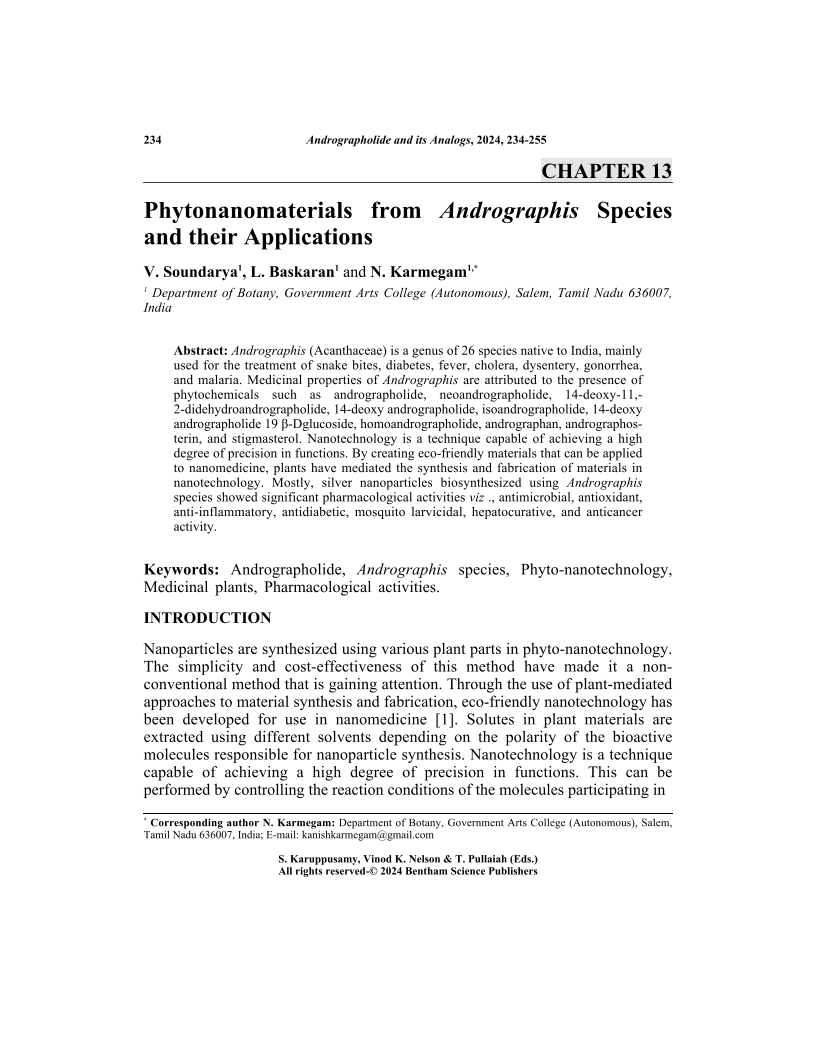Phytonanomaterials from Andrographis Species and their Applications

- Authors: V. Soundarya1, L. Baskaran2, N. Karmegam3
-
View Affiliations Hide Affiliations1 Department of Botany, Government Arts College (Autonomous), Salem, Tamil Nadu 636007, India 2 Department of Botany, Government Arts College (Autonomous), Salem, Tamil Nadu 636007, India 3 Department of Botany, Government Arts College (Autonomous), Salem, Tamil Nadu 636007, India
- Source: Andrographolide and its Analogs: Botanical Sources, Phytochemistry, Pharmacology, and Biotechnology , pp 234-255
- Publication Date: December 2024
- Language: English
Phytonanomaterials from Andrographis Species and their Applications, Page 1 of 1
< Previous page | Next page > /docserver/preview/fulltext/9789815256567/chapter-13-1.gif
Andrographis (Acanthaceae) is a genus of 26 species native to India, mainly used for the treatment of snake bites, diabetes, fever, cholera, dysentery, gonorrhea, and malaria. Medicinal properties of Andrographis are attributed to the presence of phytochemicals such as andrographolide, neoandrographolide, 14-deoxy-11,- 2-didehydroandrographolide, 14-deoxy andrographolide, isoandrographolide, 14-deoxy andrographolide 19 β-Dglucoside, homoandrographolide, andrographan, andrographosterin, and stigmasterol. Nanotechnology is a technique capable of achieving a high degree of precision in functions. By creating eco-friendly materials that can be applied to nanomedicine, plants have mediated the synthesis and fabrication of materials in nanotechnology. Mostly, silver nanoparticles biosynthesized using Andrographis species showed significant pharmacological activities viz ., antimicrobial, antioxidant, anti-inflammatory, antidiabetic, mosquito larvicidal, hepatocurative, and anticancer activity.
-
From This Site
/content/books/9789815256567.chapter-13dcterms_subject,pub_keyword-contentType:Journal -contentType:Figure -contentType:Table -contentType:SupplementaryData105

